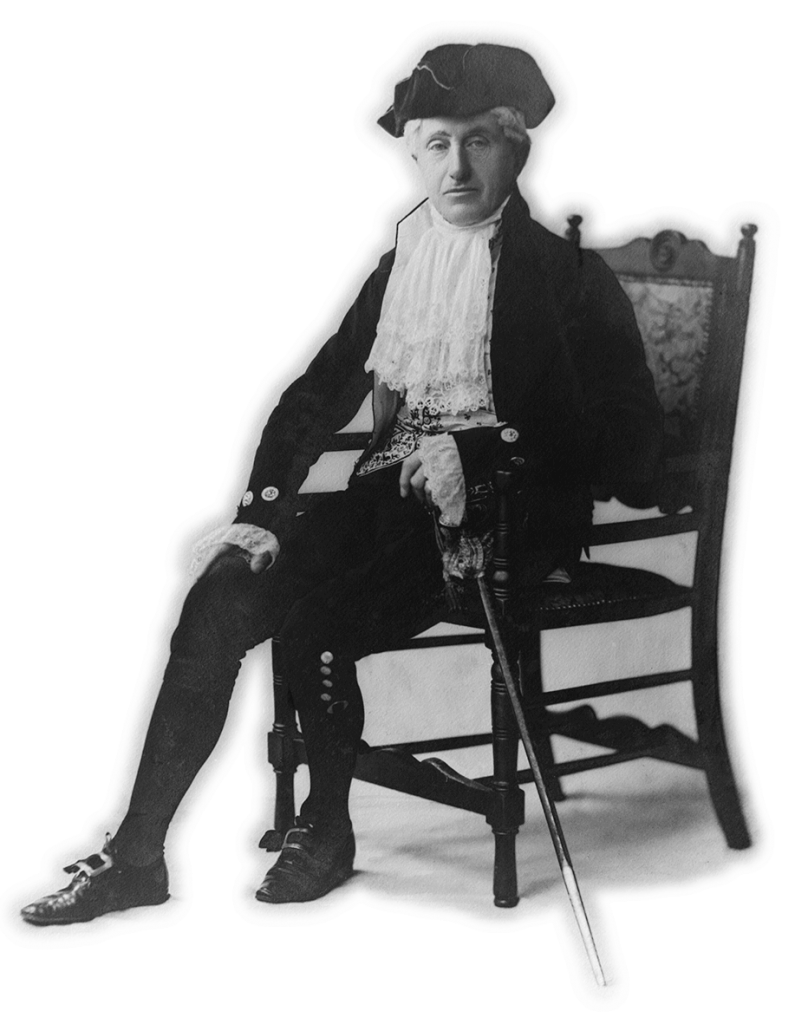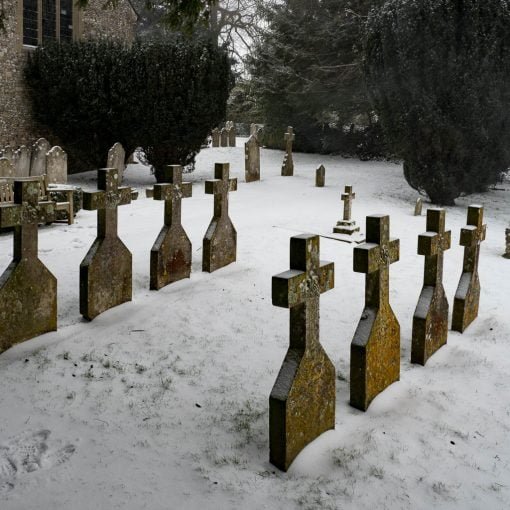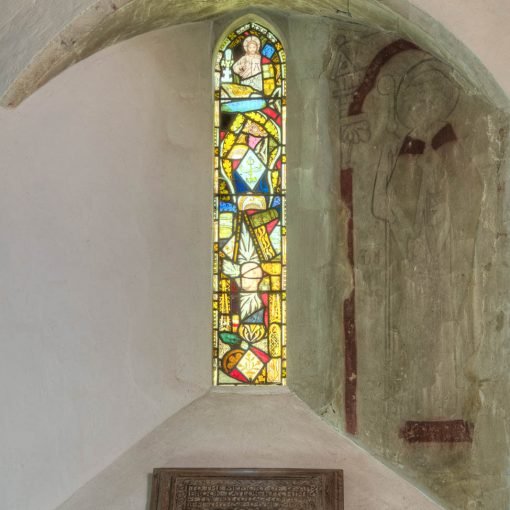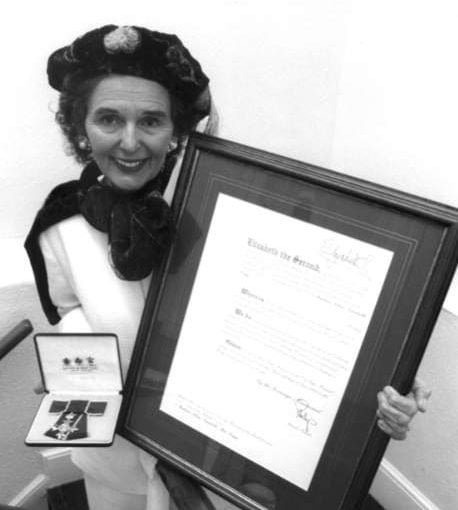The Actor and the Architect
What’s the connection between the Victorian children in these photos?
The schoolboy is Arthur Malcolm Heathcote (1847-1934), photographed at Twyford School. Arthur was the sixth son of Sir William Heathcote, 5th Baronet.
The Heathcotes had bought Hursley Park from the Cromwell family in 1718, after the death of Richard Cromwell. Although not living in our parish, Sir William was the biggest landowner here and owned the land on which Compton School was built.
Sir William had inherited the title and the estate at the age of 24, on the death of his uncle, Sir Thomas Heathcote. He had three sons and a daughter by his first wife Caroline Frances née Perceval. After her death, he married Selina Dow née Shirley by whom he had four sons and four daughters.
So why was young Arthur sent to Twyford School? Two reasons suggest themselves. His mother’s brother, Evelyn Philip Shirley, was an Old Twyfordian, an MP, antiquarian and genealogist. And Twyford School had just, in 1855, appointed a brilliant young 28-year-old don from Christ Church College Oxford, Rev George William Kitchin, as its headmaster.
The Twyford School website records that Kitchin developed a curriculum that was very modern for its day; music, drawing, history, geography and French all appear on the timetable. More surprisingly, he encouraged the boys to put on musical performances and plays, led rambling and climbing expeditions.
He also nearly doubled the school in size, so it’s possible that he canvassed the wealthy families in the area to send their children there.
It’s also possible that Arthur, who would later set up the Heathcote Players[1]Arthur Heathcote did not set up the Heathcote Players, although he organised several local amateur dramatic performances. The Heathcote Players were set up in his memory at a meeting in 1936 chaired … Continue reading, confirmed his lifelong interest in acting while at Twyford. The Hampshire Records Office has a letter home to his father in October 1856 in which he wrote My dear Papa, We had the Reward on Monday, and we went out for a walk in the morning, and did what we like, but the afternoon was the best fun, for we acted Charades, the words were “Mandarin” and “Charitable”. (HRO ref 63M84/234/40)
Kitchin was a friend of the keen photographer Lewis Carroll, who was also a mathematics lecturer at Christ Church. Amongst the photos Carroll took on his visits to his friend in Twyford was the one above of young Arthur. The later photo (right, photographer unknown) shows him as Sir Peter Teazle.
After seven years at Twyford, Kitchin left to resume his teaching career at Christ Church. He married in 1863 and his children were often photographed by Carroll. His eldest child, Alexandra Rhoda (“Xie”, pronounced “Ecksy”) was Carroll’s favourite child model.
This 1875 photograph – a tableau of St George and the Dragon – shows Kitchin’s four eldest children: Xie, and her brothers Herbert, Hugh and Brook.
Other prints exist, but this one is in the J Paul Getty Museum.
G W Kitchin went on to become Dean of Winchester and then Dean of Durham and the first Chancellor of Durham University when that post was created in 1909.
George Herbert Kitchin RIBA (1866-1951)[2]GHK was born on 9 September 1865 (according to his entry in the 1939 Register was an architect who bought and restored the 17th-century property at Compton End where he lived until his death in 1951. He created the formal Arts and Crafts style garden. Both the house itself and the garden are Grade II* listed. The barn and gazebo are Grade II listed.
G H Kitchin built or modernised many local properties. He designed a billiard room extension to the Parish Hall in 1912. His plans for the billiard room were stamped as received by Winchester RDC on 7 September 1912, approved on 12 September 1912.
He worked on several projects at Twyford School. Amongst them were the 1895 wooden reredos and dormer windows for the 1869 school chapel, which had been built by his father’s successor, Latham Wickham, and the fine WW1 memorial library to the south of Upper School (1923). With J B Colson, he designed the 1905 extension to Compton Church. In 1944, he designed the oak panelling either side of the altar in the old part of Compton Church, which commemorates former rectors Cecil Henry Hamilton Cooper (1904-1909) and Philip Cunningham (1928-1939).
Hugh Bridges Kitchin (1867-1945) married Genevieve M.G.Dufaur de Gavardie in 1917. His son, Captain George Armand de Gavardie Kitchin (1921-1996), after the death of his Uncle Herbert, inherited Compton End where he lived until 1993.
Brook Taylor Kitchin (1869-1940) lived in Yew Tree Cottage for about thirty years and was for several years Head Architect to the Ministry of Health. There is a carved wooden memorial to him in All Saints’ Compton, in the chancel of the “old church”.
Come and find out more at the LHS meeting: 7:30 pm Thu 26 April in the pavilion.
Adrian Walmsley
Reprinted from the April 2018 issue of Compton & Shawford Parish Magazine, with the date of Twyford School chapel corrected and the reference to the Cooper/Cunningham memorial added.
C&S Parish Magazine
The September 2023 issue of the Compton & Shawford Parish Magazine featured a watercolour by Herbert Kitchin on its front cover, with the caption
View across Compton valley towards Oliver’s Battery. Watercolour by G H Kitchin dated 23 July 1934
References
| ↑1 | Arthur Heathcote did not set up the Heathcote Players, although he organised several local amateur dramatic performances. The Heathcote Players were set up in his memory at a meeting in 1936 chaired by George Crawford |
|---|---|
| ↑2 | GHK was born on 9 September 1865 (according to his entry in the 1939 Register |







